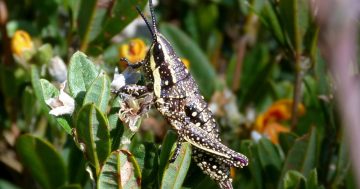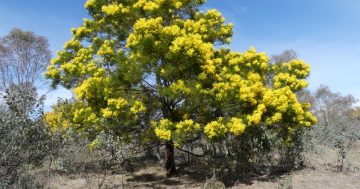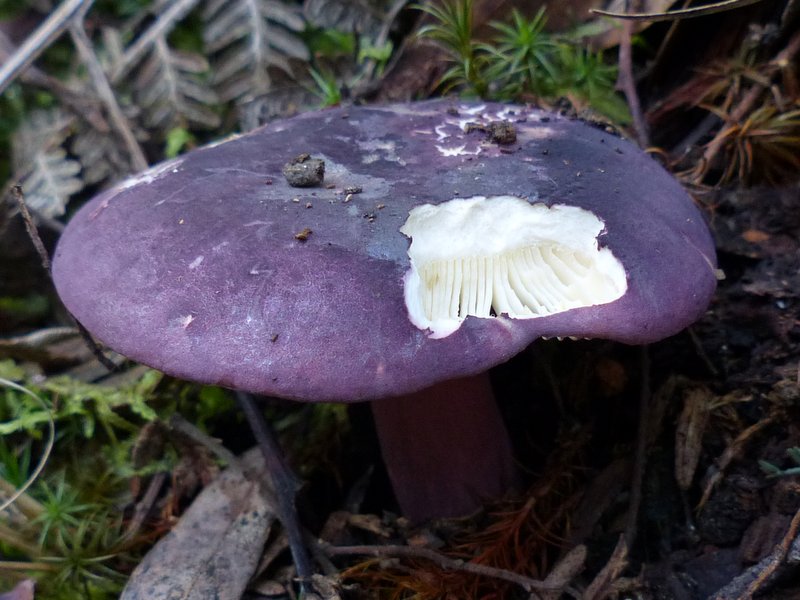
Rosy Rozites, Tidbinbilla. These fungi are mostly toxic to mammals, so the nibbler was probably a slug. Photo: Ian Fraser.
This time of year in Canberra is peak fungus season and this one has been an absolute ripper. There have been the usual and utterly vital warnings about not harvesting (and preferably not even touching) the rich bounty of mushrooms and toadstools popping up in urban parks and gardens.
There is, however, an even more wonderful world of them out in the bush, especially in wet forests such as along the Tidbinbilla walking tracks and in Namadgi National Park, but also on any of the Canberra Nature Park hills.
It’s worth understanding more of what we’re seeing when we admire a toadstool (or eating when we buy nice mushrooms).
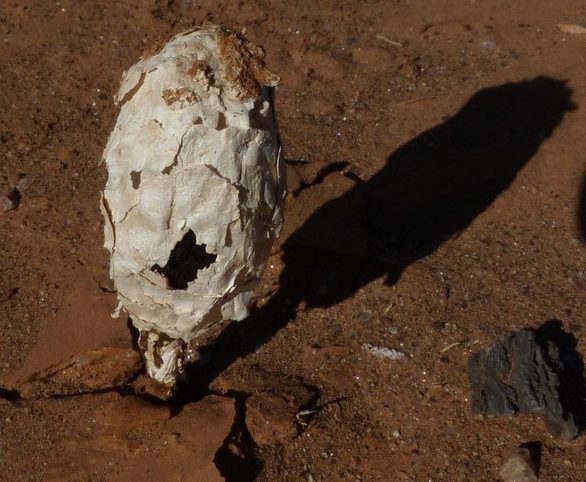
This slightly macabre photo is of a fungus growing from the body of the caterpillar it has devoured underground. Photo: Ian Fraser.
First, fungi are not plants. They form a whole other kingdom alongside animals and plants, but it’s helpful to use a plant comparison here.
Apples appear annually on the tree to produce seeds for new apple trees, but the tree is always there. A toadstool is like an apple, produced periodically to make ‘seeds’, actually spores. However, while also always present, its’ tree’ is hidden from sight. It comprises a net of fine hairs (the mycelium, for the record) which is underground, or inside a log or tree trunk, for instance.
The net is constantly breaking down and digesting organic material, helping termites control the forest litter load, which is key bushfire fuel. We should certainly remember this net, which is, after all, the point of the organism, but it’s the temporarily visible parts that interest us most.
In grassland fungi (such as edible Field Mushrooms, but not only them), the mycelium spreads out more or less evenly and the mushrooms form in the familiar ring around it.
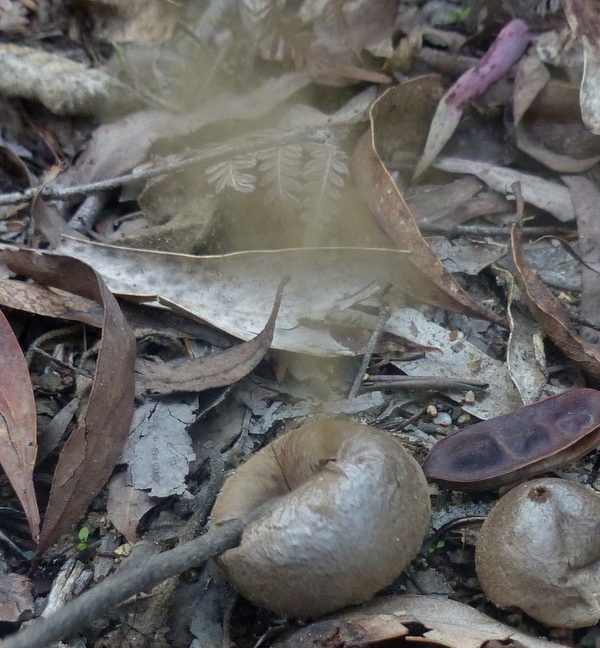
Puffball, Tidbinbilla, puffing out a cloud of spores to disperse on the breeze. Photo: Ian Fraser.
In most toadstools and mushrooms (I’ll just refer to fungi from now on), the spores are produced under the cap and drop when the gills open to disperse on the slightest breeze. The puffballs take this a step further. There are many different ones, and they don’t have an open cap or gills. When ripe, the slightest poke with a stick, or bump by a passing animal or a raindrop falling onto it, will cause the cap to burst and expel a cloud of spores to be dispersed.
Another favourite of mine is the Starfish or Anemone Fungus, one of the stinkhorns, which is a useful name! It is shaped like a red starfish on a short stem, with eight fleshy forked ‘arms’ around a green-purple slimy centre. And yes, it does stink if you get close enough, unpleasantly like rotting meat.
This is no coincidence and flies (the experts on such things) are fooled into investigating it. Even to us, the fungus resembles an infected wound, and this is what the flies are hoping for. In the process, they collect spores from the fungus surface and transport them far away when they become disappointed and fly off.
Bracket fungi, sometimes known as punk in Australia, form hard woody discs on tree trunks. Unlike most fungi, they don’t collapse and disappear after dropping their spores but are permanent fixtures, growing year by year. (Not true of all brackets, however, as some species regrow annually.)
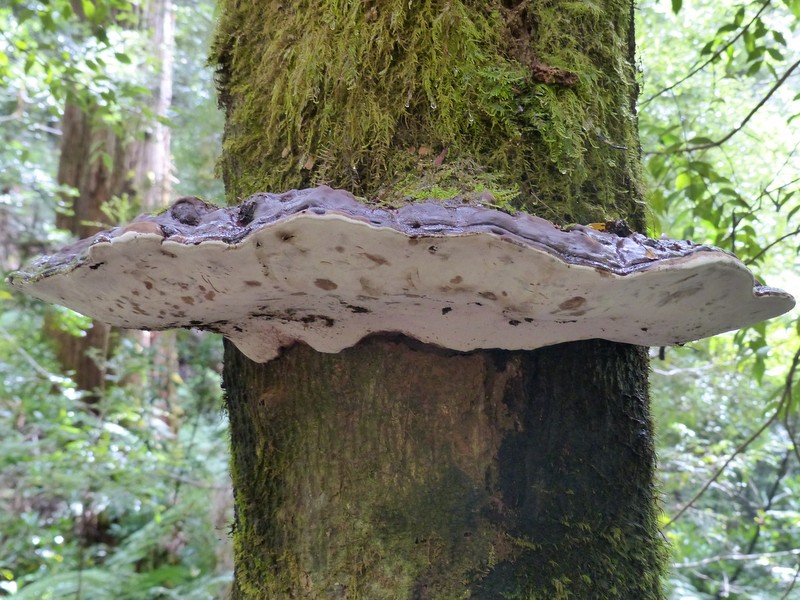
Some bracket fungi, adding layers every year, can become enormous. Photo: Ian Fraser.
Another remarkable group of fungi are known as the Horse Dropping Fungi in Australia. Their big fruiting body (bearing a definite resemblance to the name) form underground and are forced to the surface by the underground mycelium net. This force is so remarkable that the toadstool can break through the surface of a bitumen road.
Other fungi are not nearly so conspicuous. One local group of tiny orange fungi specialise in growing on (and disposing of) wombat droppings. Some fungi attack and digest living insects, an unpleasant concept to consider.
Orchids rely entirely on fungi associated with their roots to get established; their tiny seeds are too small to carry extra nutrients. Eucalypt roots are interdependent with fungi, exchanging water and nutrients that would otherwise be unavailable to the other partner. The underground fruiting bodies are truffles, which are eagerly sought by bandicoots and bettongs, which then distribute the spores and play key roles in maintaining a healthy forest.
Other fungi affect us more directly. Many attack human skin, causing rashes such as tinea or ringworm. Others are far more beneficial. Without yeast fungi, there would be no leavened bread or beer. Some cheeses rely on fungi.
Without fungi, the world would be a very different and poorer place. Now would be a good time to go and pay your respects.
Ian Fraser is a Canberra naturalist, conservationist and author. He has written on all aspects of natural history, advised the ACT Government on biodiversity and published multiple guides to the region’s flora and fauna.
Original Article published by Ian Fraser on Riotact.



